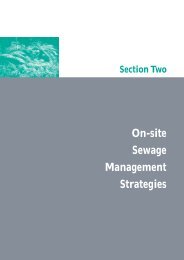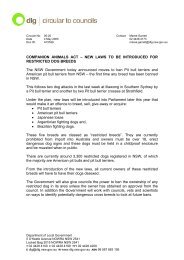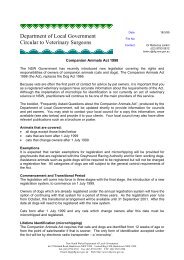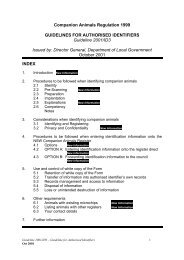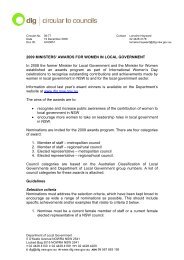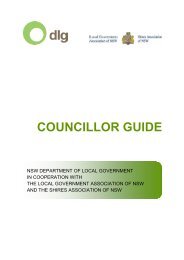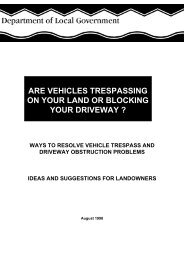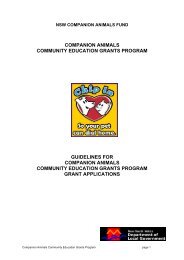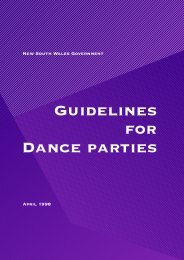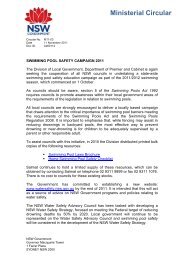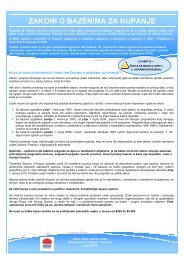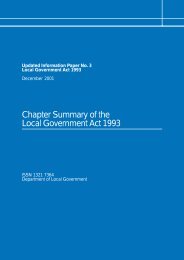Integrated Planning and Reporting Manual - Division of Local ...
Integrated Planning and Reporting Manual - Division of Local ...
Integrated Planning and Reporting Manual - Division of Local ...
You also want an ePaper? Increase the reach of your titles
YUMPU automatically turns print PDFs into web optimized ePapers that Google loves.
3. THE RESOURCING STRATEGY<br />
3.3 Workforce Management <strong>Planning</strong><br />
Essential Element 2.7<br />
A Workforce Management Strategy must be developed to address the human resourcing requirements<br />
<strong>of</strong> a council’s Delivery Program.<br />
Essential Element 2.8<br />
The Workforce Management Strategy must be for a minimum <strong>of</strong> four years.<br />
Workforce planning will help to ensure that the community’s strategic goals - as expressed in the<br />
Community Strategic Plan - will be met. The development <strong>of</strong> an effective workforce strategy will<br />
enable Council to focus on the medium- <strong>and</strong> long-term <strong>and</strong> also provide a framework for dealing<br />
with immediate challenges in a consistent way.<br />
An effective workforce strategy aims to provide Council with the people best able to inform its<br />
strategic direction, develop innovative approaches to complex issues <strong>and</strong> deliver appropriate<br />
services effectively <strong>and</strong> efficiently.<br />
By approaching workforce planning in a strategic way a number <strong>of</strong> aims <strong>and</strong> statutory requirements<br />
can be addressed in a single process to ensure that all aspects <strong>of</strong> Council’s operations are<br />
appropriate <strong>and</strong> effective. These include EEO management planning <strong>and</strong> practising the principles <strong>of</strong><br />
multiculturalism.<br />
The benefits <strong>of</strong> ensuring a diverse workforce include better local representation, improved<br />
communication <strong>and</strong> better underst<strong>and</strong>ing <strong>of</strong> the issues affecting local communities, as well as<br />
maximising the pool <strong>of</strong> workers from which to address the issues facing councils. Such issues could<br />
include skills shortages, ageing workforce <strong>and</strong> business succession planning, as well as invigorating<br />
local communities <strong>and</strong> economies.<br />
Strategic issues to consider when developing Council’s Workforce strategy include the analysis <strong>of</strong><br />
council’s workforce requirements based on the commitments in the Community Strategic Plan <strong>and</strong><br />
Delivery Program, developing an appropriate workforce structure to meet those objectives,<br />
workplace equity <strong>and</strong> diversity as a tool to benefit Council, strengthening Council’s workplace<br />
governance, <strong>and</strong> supporting <strong>and</strong> developing Council’s staff.<br />
DLG is developing a web-based resource on workforce planning to assist councils, which will be<br />
included on the <strong>Integrated</strong> <strong>Planning</strong> <strong>and</strong> <strong>Reporting</strong> website at www.dlg.gov.nsw.au. Councils may<br />
also wish to consider the NSW Government’s publication: Workforce <strong>Planning</strong>: A Guide, which can<br />
be found on the NSW Department <strong>of</strong> Premier <strong>and</strong> Cabinet’s website: www.dpc.nsw.gov.au.<br />
<strong>Planning</strong> & <strong>Reporting</strong> <strong>Manual</strong> Page 66 <strong>of</strong> 115



